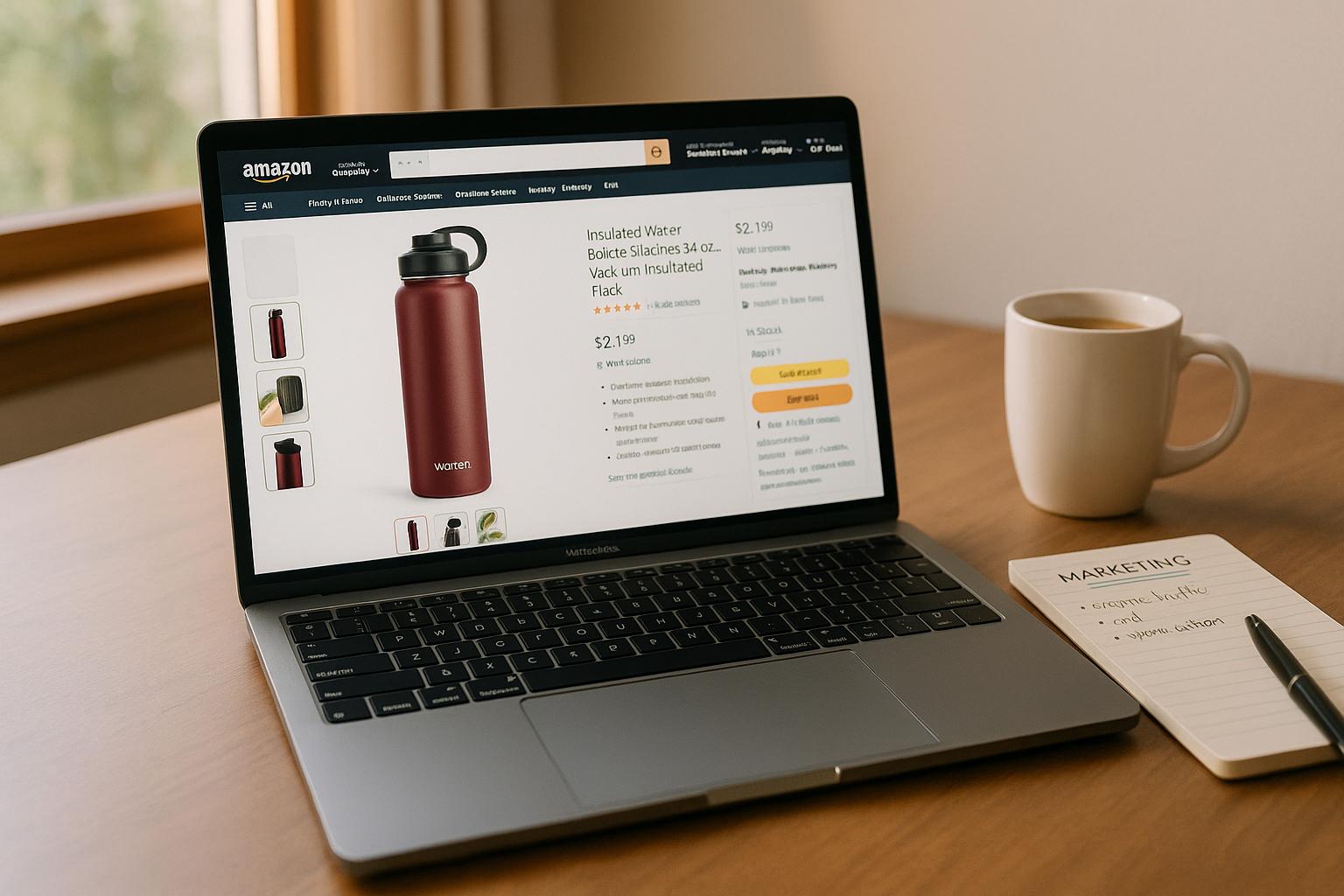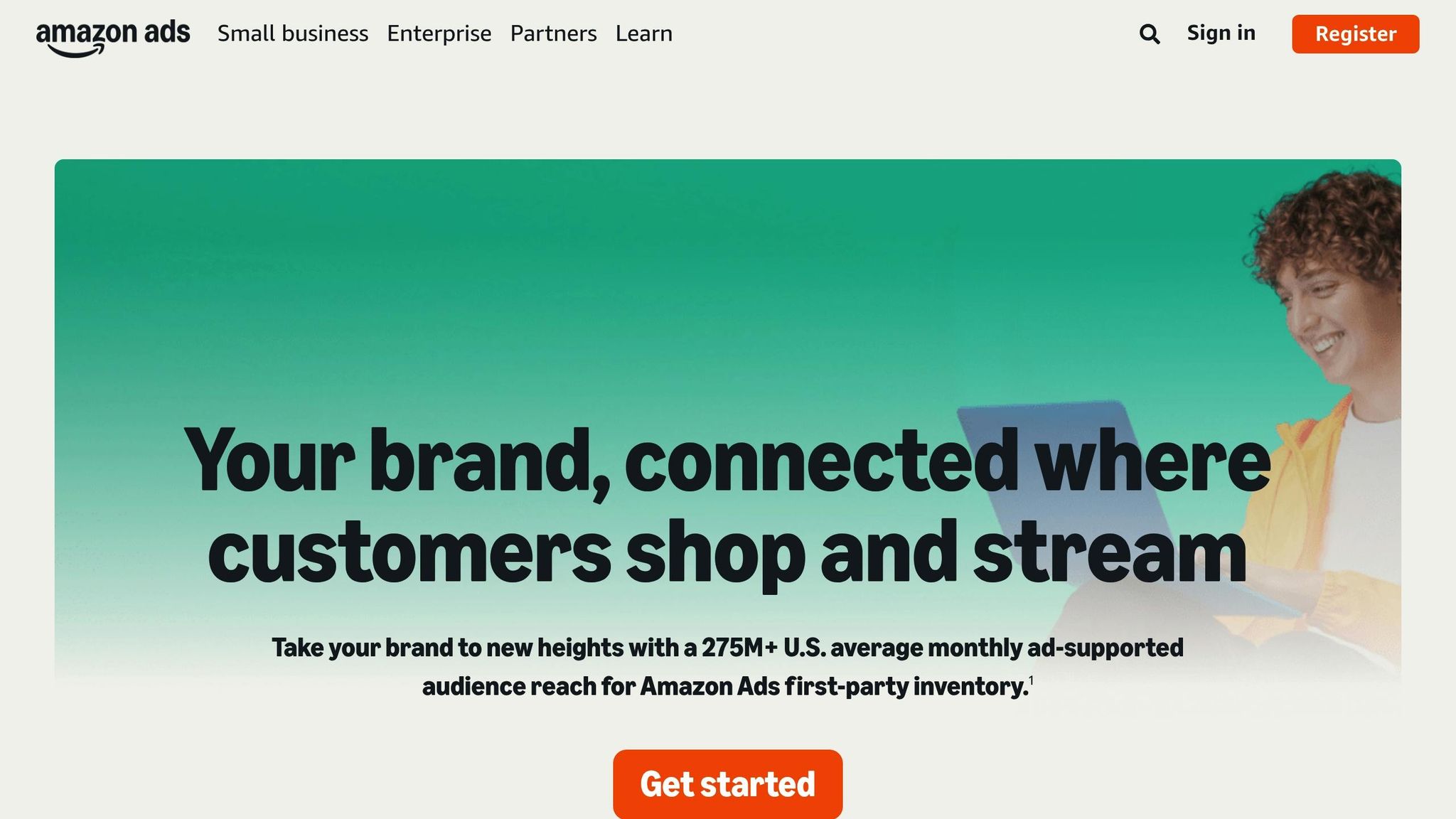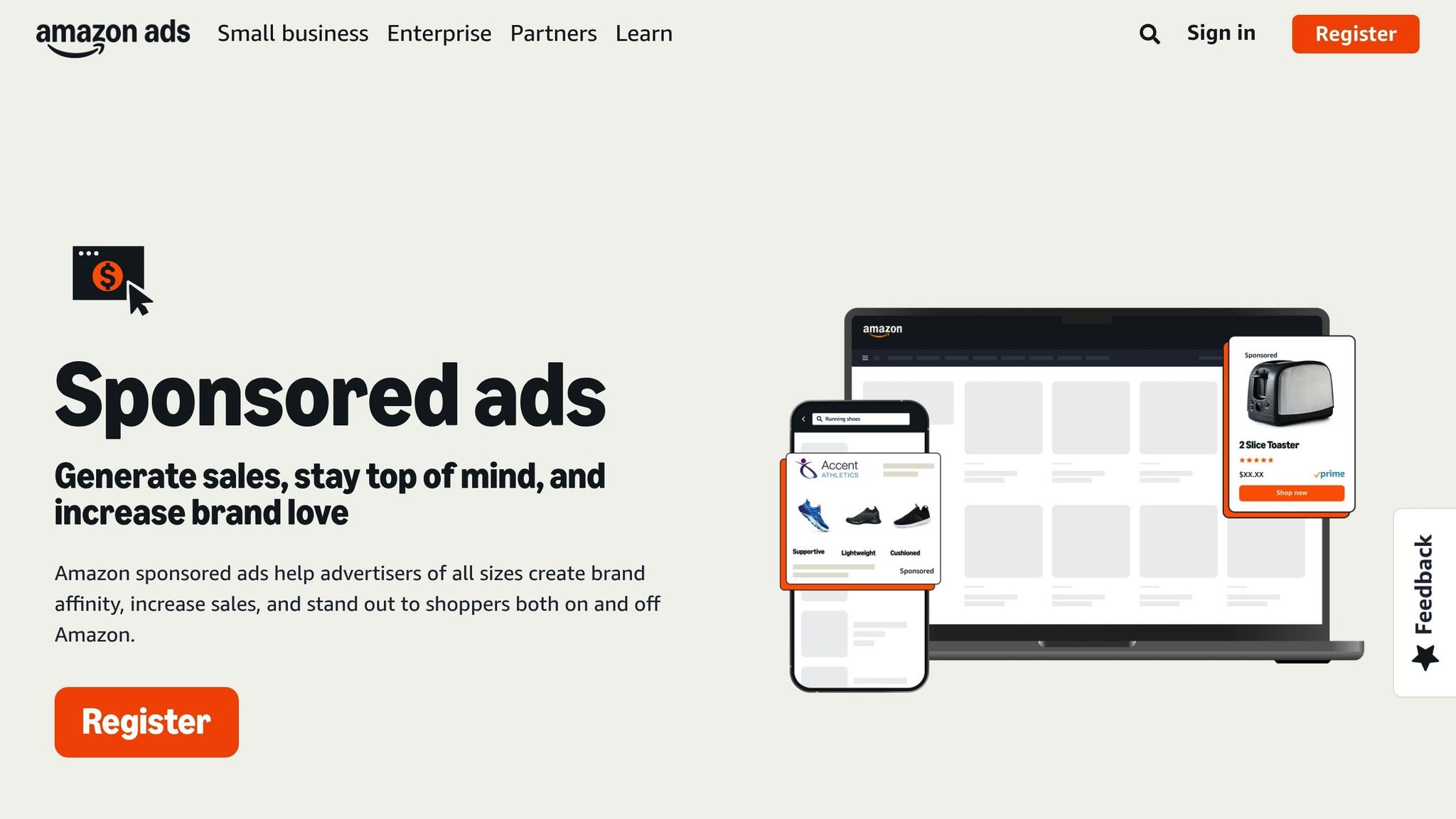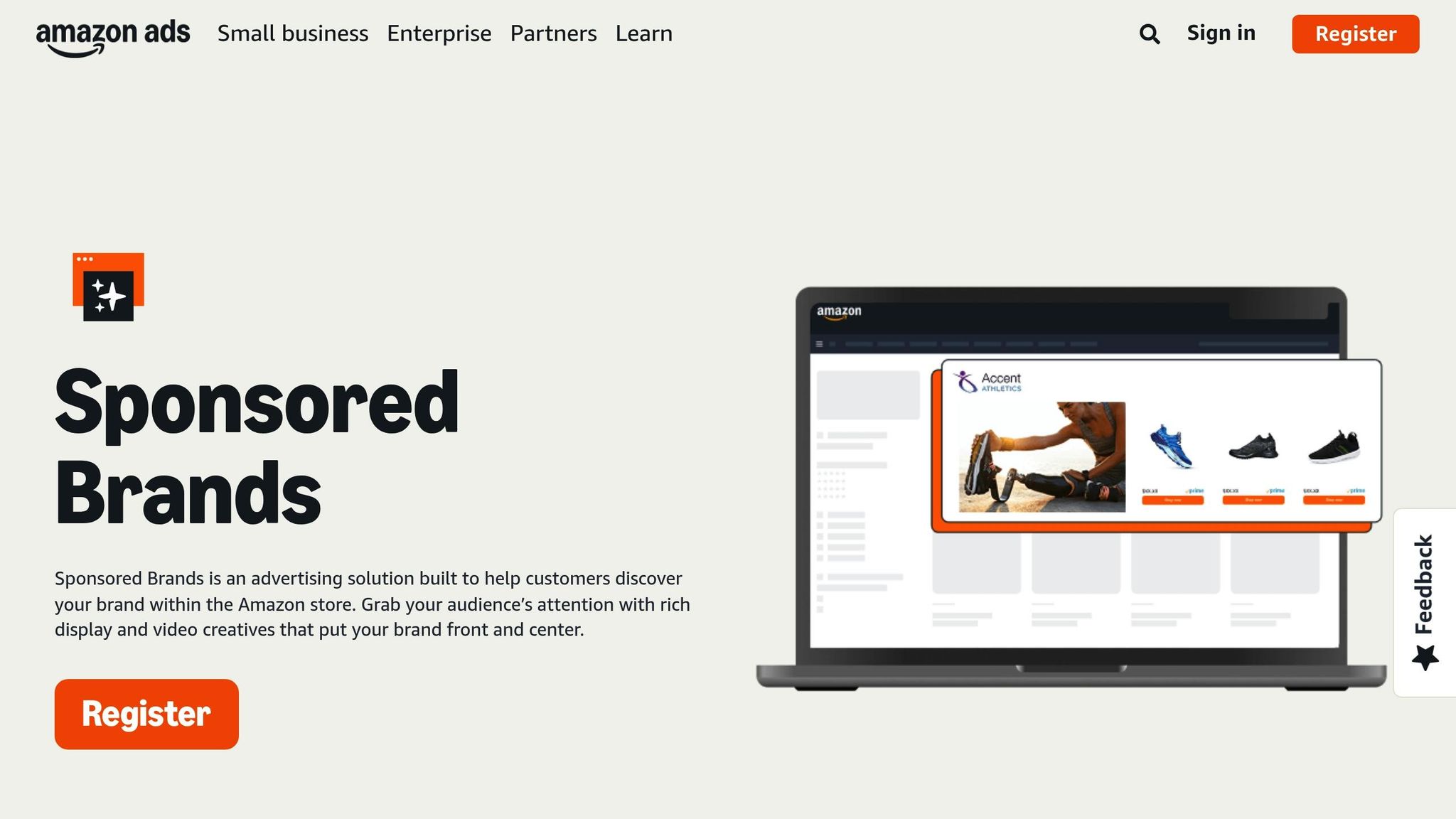
Amazon is undeniably the number one marketplace in eCommerce, serving as a crucial platform for businesses aiming to scale their online presence. However, succeeding on Amazon requires more than simply listing your products and hoping for the best. The platform operates with a unique algorithm and ecosystem that demand specific strategies to increase visibility, drive traffic, and generate sales.
In this article, we’ll explore actionable strategies to enhance both organic traffic and advertising performance on Amazon. By optimizing your listings, leveraging reviews, and appropriately managing Amazon Ads, you can create a well-rounded approach to maximize your ROI on the platform. Let’s dive into the essentials.
Why Amazon Advertising and Organic Optimization Are Critical
Amazon search results are dominated by paid placements – 70% of the real estate on a search results page consists of paid ads, and about 50%-60% are sponsored ads. This means that achieving visibility for your products, especially as a new seller, often requires a combination of organic optimization and paid advertising.
The good news? Once you understand the rules of the Amazon game, you can create a self-sustaining ecosystem where organic and paid efforts work together to drive long-term growth.
The Foundation: Optimizing Your Organic Traffic
Optimizing your product listings is the cornerstone of driving free, organic traffic on Amazon. Without optimization, even the best advertising campaigns can fall flat.
1. Perfect Your Product Listings
Amazon’s algorithm pulls from your listing’s content to determine its relevance to customer searches. To rank higher organically, focus on these key areas:
- Titles: Craft an Amazon-optimized title that includes all relevant keywords. Unlike other platforms, Amazon titles can be up to 20 words long and are intended for keyword stuffing rather than grammatical perfection. For instance, instead of “Insulated Water Bottle”, you might write: “Insulated Stainless Steel Water Bottle – 32 oz, Leakproof Lid, Keeps Drinks Cold for 12 Hours.”
- Bullet Points and Descriptions: Use concise, benefit-driven bullet points that highlight the product’s value. For detailed descriptions, aim to include more keywords naturally while answering key customer questions.
- Hidden Search Terms: Don’t overlook this meta field during your listing setup. Use it to include additional keywords that aren’t visible to customers but are critical for indexing.
2. Focus on Reviews
Reviews not only influence customer trust but also contain valuable keywords that Amazon factors into its search rankings. Here are some ways to build your review base:
- Send products to friends or family and encourage them to leave honest reviews.
- Leverage Amazon’s Vine Program, which facilitates reviews from verified customers.
- Avoid spammy or manipulative tactics to generate reviews, as Amazon’s algorithm actively penalizes suspicious activity.
3. Use High-Quality Images
Images are crucial for both conversions and organic visibility. Aim for 5-6 high-quality images per listing, showcasing your product from multiple angles and in use-case scenarios. Amazon’s algorithm also favors listings with more images.
4. Leverage External Channels for Organic Traffic
While Amazon’s ecosystem is largely self-contained, using external channels – like your social media accounts, email newsletters, or website – to drive traffic to your listings can boost visibility. Use the Amazon-generated short URL for your product page to ensure links are optimized.
5. Run Promotions and Deals
Running limited-time discounts or promotions can give your product a temporary boost in visibility. The Amazon Deals page is one of the platform’s most visited sections, especially during peak sales seasons like Prime Day or Black Friday.
Unlocking Amazon Ads: The Paid Traffic Advantage

While organic strategies provide a foundation, Amazon Advertising is critical for gaining traction, especially when launching new products. Sponsored ads ensure your product appears in key positions when customers search for relevant keywords.
1. Start with Sponsored Ads

Sponsored Ads are Amazon’s lower-funnel advertising option, designed to target customers actively searching for products like yours. These ads feature individual listings and account for the majority of paid placements on Amazon search results pages.
Steps to Get Started:
- Run Automatic Campaigns: For new sellers, let Amazon’s algorithm handle the initial targeting. It uses your listing’s keywords to decide which terms to bid on and gathers valuable performance data.
- Analyze Data: After two weeks, review the automatic campaign results to identify high-performing keywords.
- Launch Manual Campaigns: Using the insights from your automatic campaign, create manual campaigns that focus on specific high-converting keywords.
2. Scale with Sponsored Brand Ads

Once your Sponsored Ads are delivering solid results, consider expanding to Sponsored Brand Ads, which are designed for top-of-funnel awareness. These ads allow you to promote a collection of products or your entire brand with banner-style placements that include lifestyle images or videos. Sponsored Brand Ads are ideal for building long-term customer recognition.
Creating a Virtuous Cycle: Merging Organic and Paid Strategies
One of the most powerful strategies on Amazon is to integrate your paid and organic efforts. As you gather data from your advertising campaigns, take the following steps to improve both areas:
- Use Winning Keywords: Identify keywords that perform well in your ads and input them into your organic listing (titles, descriptions, hidden search terms).
- Adjust Ad Spend: Use the performance metrics from your campaigns (e.g., Advertising Cost of Sale, or ACOS) to refine bids and pause underperforming campaigns.
- Keep Testing: Amazon’s algorithm and customer behavior constantly evolve. Revisit and refine your campaigns and listings every couple of weeks.
Key Takeaways
- Optimize Listings: Ensure your titles, descriptions, bullet points, and images are optimized with relevant keywords. Don’t forget hidden search terms!
- Focus on Reviews: Reviews build trust and contribute keyword-rich content that boosts your organic rankings. Use Amazon Vine or send products to trusted customers to generate reviews.
- Leverage Free Traffic: Promote your Amazon listings through external channels like social media, email newsletters, and your website.
- Invest in Sponsored Ads: Begin with automatic Sponsored Ads to gather data, then refine your strategy with manual campaigns and Sponsored Brand Ads.
- Monitor Performance: Use metrics like ACOS to track the ROI of your advertising campaigns and adjust bids or keywords as needed.
- Combine Organic and Paid Efforts: Use insights from your ads to improve your listing for better organic performance.
- Take Advantage of Sales Events: Plan campaigns around Amazon’s key sales periods, such as Prime Day or Black Friday.
- Set Budgets: Start small, but remain consistent. Amazon Ads can deliver a greater ROI than Google or Meta ads due to its conversion-friendly audience.
Conclusion
Selling on Amazon is a dynamic and competitive process. Success requires a balance of well-optimized product listings and strategic advertising. By focusing on organic optimization, building credibility through reviews, and leveraging Amazon’s advertising platform, sellers can achieve measurable growth and scalability. Whether you’re new to Amazon or looking to improve existing campaigns, these strategies will help you unlock the full potential of the world’s largest online marketplace. Take the first step, and start optimizing today!
Source: “Marketplaces: Insider Strategies to Boost Organic Traffic and Ads Performance on Amazon with Farh…” – eCommerce MasterPlan, YouTube, Aug 27, 2025 – https://www.youtube.com/watch?v=YvL6lv6Kyxs
Use: Embedded for reference. Brief quotes used for commentary/review.
